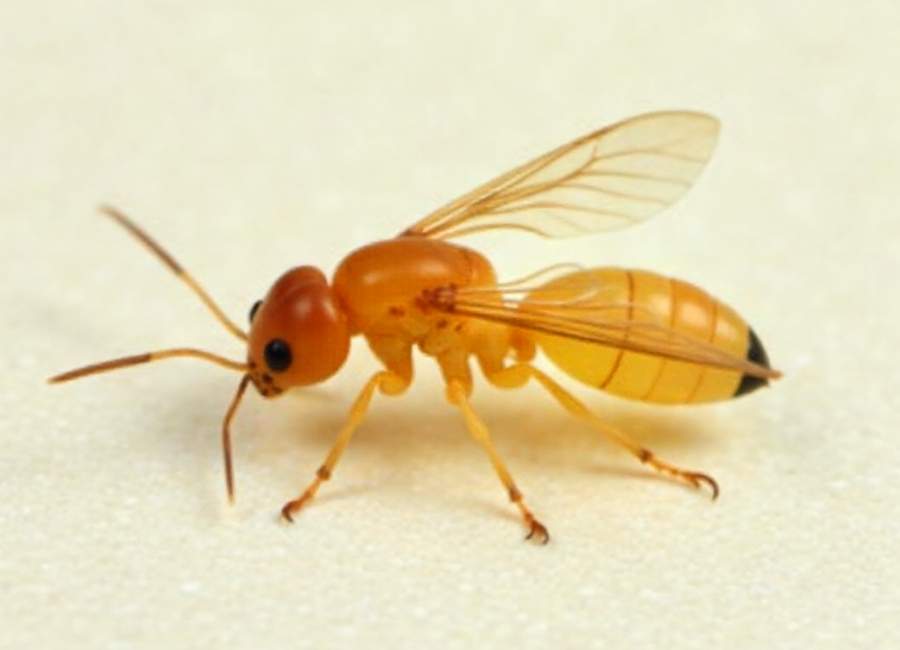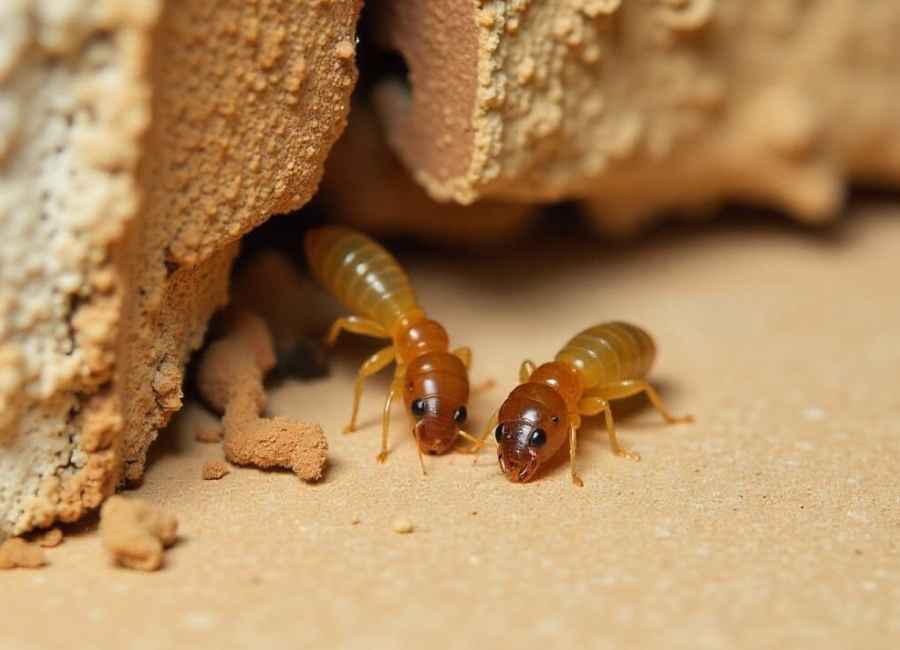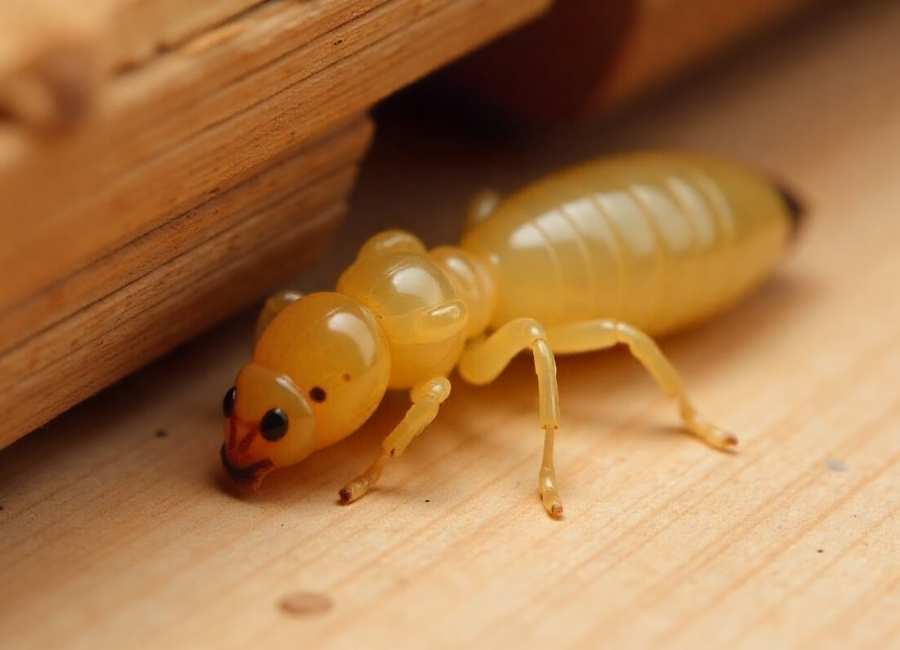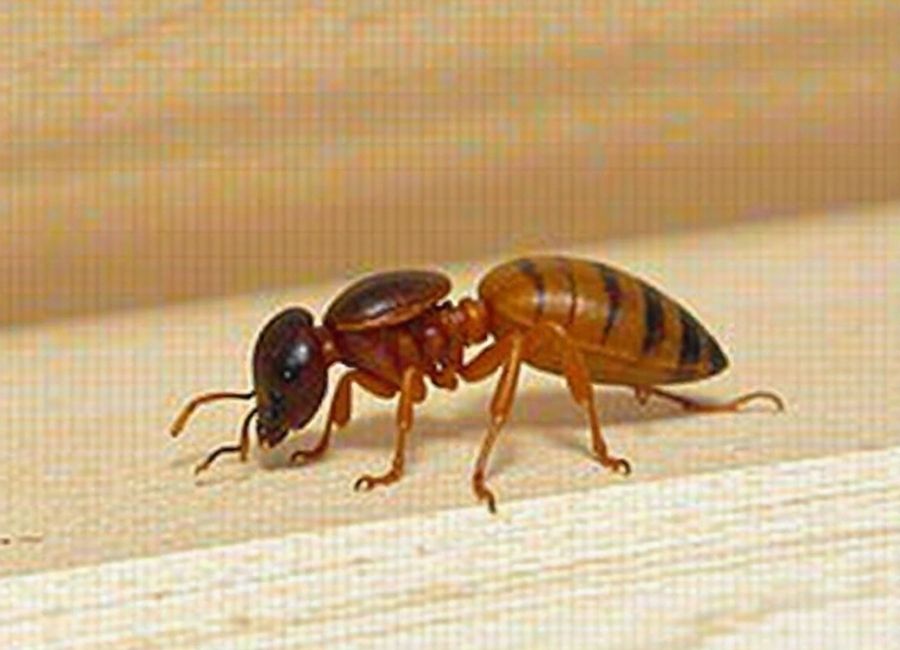When it comes to dreaded household pests, termites often top the list. They may not bite like ants or buzz like mosquitoes, but what they do is far worse: they silently destroy the wood and structure of your Home or business. According to the USDA, the desert subterranean termite alone causes over $1.5 billion in damages each year—and that’s just one species.
While estimating the full scope of termite destruction is nearly impossible, identifying them early isn’t. This guide will show you how to recognize termites with the naked eye, spot the telltale signs of infestation, understand why they often go unnoticed, and learn which bugs can be mistaken for them.
How to Identify Termites

Termites reproduce quickly—some can lay up to 25 eggs per minute—so proper identification is crucial. Unfortunately, many people confuse termites with other insects, especially ants.
If you’ve spotted a small winged insect and aren’t sure, look for these features that distinguish swarmer termites (the reproductive kind):
- Wings: Clear, equal-length wings with rounded tips
- Body: Straight, uniform shape without a “waist”
- Size: About ¼ inch long
- Antennae: Short and straight (not elbowed)
You might also encounter other termite castes:
- Soldier termites have dark heads, light bodies, and strong mandibles (pincers).
- Worker termites are pale, soft-bodied, and resemble tiny grains of moving rice.
Do Termites Bite Humans?
Termites rarely, if ever, bite humans or pets. Only soldiers have mandibles, and they make up less than 10% of a colony. Their focus is on wood—not you—so if you’re seeing bites, another pest is likely responsible.
Common Signs of Termite Activity

Even though termites have distinctive features, their secretive nature makes infestations hard to spot. Look for these warning signs:
- Infested wood piles or tree stumps within 25 feet of your property
- Mud tubes on foundations, walls, or ceilings (break one open; if repaired within days, the colony is active)
- Mud splatters or patches inside walls or on drywall
- Unexpected structural issues like sagging ceilings, stuck doors, or buckling floors
- Wood damage uncovered during renovations
- Frass (termite droppings): Small, dry, tan-colored pellets resembling sawdust
- Discarded wings near windows or doors, left behind by swarmers
If any of these signs appear, a professional inspection is highly recommended.
Where Termites Are Found
There are three main termite types found in the U.S.:
- Subterranean Termites – Live underground; the most widespread and destructive.
- Formosan Termites – The most aggressive species, found mainly in the South, Texas, New Mexico, and California.
- Drywood Termites – Live directly in wood; common in Florida and along the southern border states.
Why Termites Often Go Unnoticed
Termites prefer hidden, undisturbed areas—underground, inside wood, or behind walls. Attics, crawl spaces, basements, and wall voids make perfect hiding spots, allowing colonies to grow unnoticed for months or even years.
Insects Commonly Mistaken for Termites
Several bugs can resemble or cause similar damage to termites:
- Powderpost Beetles: Leave fine, flour-like wood dust instead of pellet-shaped droppings.
- Carpenter Bees: Bore large, round holes and leave dark yellow stains.
- Carpenter Ants: Have elbowed antennae, narrow waists, and uneven-length wings.
- Acrobat Ants: Known for biting and emitting a foul odor when disturbed.
When Are Termites Most Active?
Termite activity depends on temperature, not time of day. They thrive when temperatures stay between 70–90°F, which means spring and summer are their peak seasons. However, in mild climates, they can remain active year-round.
Frequently Asked Questions

Can you see termites in wood?
Not easily. They hide inside wood, but you can spot their presence through mud tubes, hollow-sounding timber, or damaged areas.
Are termites visible to the naked eye?
Yes—especially during swarms or when inspecting closely. Individual termites are small but visible.
Do termites have eyes?
They have small compound eyes, but they rely more on touch and chemical signals than sight.
What do termites look like?
Soft-bodied, pale insects with straight antennae and a thick waist.
Are termites nocturnal?
They’re most active at night and in dark, humid environments, though activity depends mainly on temperature.
How can I detect termite activity early?
Look for mud tubes, discarded wings, hollow wood, or frass. Regular inspections are key.
What does a termite colony look like?
Colonies have workers (pale), soldiers (dark heads, strong jaws), and swarmers (winged reproductives).
How do termites behave?
They live in highly organized colonies where each caste performs specific duties like building, foraging, and reproduction.
How can you tell termites apart from ants?
Termites have straight antennae, thick waists, and equal-length wings; ants have elbowed antennae, thin waists, and uneven wings.
Can you detect termites before seeing them?
Yes—through early warning signs like mud tubes or wood damage. Professional inspections help catch infestations before serious harm occurs.
Protect Your Home from Termites
If you suspect termite activity, don’t wait. Contact Smithereen Pest Management Services for professional inspection and treatment. With over a century of experience, we’re dedicated to protecting your property from costly termite damage.











